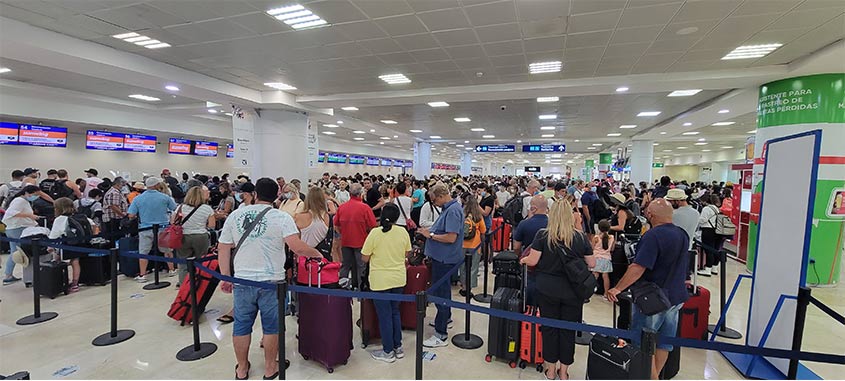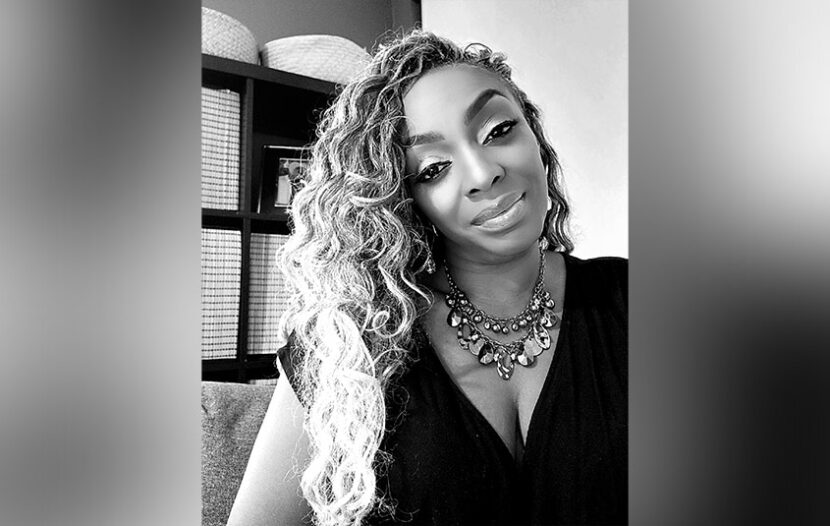TORONTO — We’ve all heard the horror stories about Toronto Pearson in recent months. The long lineups, the flight delays and cancellations, the lingering travel requirements, which include the mandatory use of the ArriveCAN app and random COVID-19 testing. But are things really that bad?
Not at all, says Shalene Dudley.
After taking two recent trips with Sunwing – one in July to Dreams Sapphire Resort & Spa in Riviera Maya with her children, and another in August to Sandals South Coast in Jamaica with a wedding group – Dudley, Owner and Lead Travel Concierge at Latitude Concierge Travels, Ltd in Burlington, ON, tells Travelweek that although flying through Toronto Pearson is certainly different now compared to pre-pandemic, it’s not as horrible as one would think.
“In my opinion, so many travel restrictions have been lifted and the ones that remain will start to feel like the new norm, similar to the changes implemented after 9/11,” says Dudley. “Travellers just need to change their mindset regarding timeframes, flexibility and budgets. Planning ahead and preparing for changes is a must.”
For travel advisors who haven’t been able to travel recently and experience first-hand what the situation is currently like at Toronto Pearson International Airport, we asked Dudley to walk us through both her departure and arrival experience at Toronto Pearson.
DEPARTING FROM YYZ
Although Dudley was already aware of the lineups and delays at Toronto Pearson, they were not at all what she had expected. Upon arrival at YYZ for her flight to Mexico, she says “the security line was extremely long,” wrapping its way down the terminal. To make matters worse, “Sunwing’s kiosks were down,” which resulted in even more lineups. The entire security process took about 90 minutes to complete, from beginning to end.

Photo credit: Shalene Dudley
Once past security, Dudley’s troubles only worsened, with her Sunwing flight delayed by three hours. She was told that the flight departing the day before had been cancelled and rescheduled to fly with hers.
Her second trip to Jamaica in August, however, began on better footing, which is in line with the federal government’s ongoing reassurances that the situation at Toronto Pearson has been steadily improving. Terminal kiosks this time around were at least up and running, says Dudley, however, with four flights departing all at around the same time as hers in the morning, lineups at check-in counters remained “extremely long.”
Looking back, Dudley tells Travelweek that she’s grateful she had the good sense to purchase Elite Plus, Sunwing’s optional service priced at $50, which includes, among other perks, priority check-in, priority boarding and complimentary advanced seat selection.
“I was able to avoid the long lineups with Elite Plus, plus security was a short line the second time around as it was very early in the morning,” she says.
Another high point during her departure experience at Toronto Pearson were Sunwing’s agents, adds Dudley.
“All of the counters had agents and they were working really hard to get everyone checked in,” she says. “They all had amazing attitudes and seemed to be working as efficiently as possible. And although many lines were long, they were constantly moving.”
ARRIVING AT YYZ
Dudley’s experience at Toronto Pearson on the way home, after both of her trips, was fairly seamless, far from the chaotic scenes that were widely reported in media throughout the summer. Upon returning from Mexico, she and her fellow passengers were de-planed 50 at a time and breezed through customs and baggage claim in under 40 minutes. Dudley’s bags were retrieved in about 10 minutes. During her drive home, she received an alert on her phone, notifying her that her daughter had been randomly selected for mandatory COVID-19 testing, which she would later do off-site, at an approved provider location or pharmacy.
Her flight home from Jamaica, which was already delayed in Montego Bay, took an additional hour to complete as there wasn’t an available runway at YYZ for the pilot to land. After circling the area, Dudley’s flight was finally given clearance to land, which was the only major blip in an otherwise pleasant journey.
“The customs area was only about 20% occupied and all kiosks seemed to be in working order. And because I had completed my customs declaration in the ArriveCAN app, I only had to insert my passport in a kiosk and take a photo. The line to see a customs officer was only about five people-long, and when it was my turn, the officer didn’t even look at my passport or ask for my ArriveCAN results,” says Dudley.
Her bags did take a little longer to come out, but this was not entirely surprising since she breezed through customs. Dudley made it home to Oakville, Ontario just 90 minutes after her flight landed.
ARRIVECAN
It doesn’t look like Canada’s ArriveCAN app is going away anytime soon. First launched in November 2020 to monitor COVID-19 vaccinations among air arrivals, the mandatory app has long been a contentious point for debate among travel industry experts and advocacy groups, who say the app has outlived its usefulness and is contributing to airport delays. The federal government says that without the app, delays would be even longer. Plus, there are plans to eventually evolve the app into a tool for customs declarations.
But many travel agents have told Travelweek that their clients, particularly older ones, continue to have a hard time downloading and navigating their way around the app. Concerns over poor Wi-Fi connection while in destination and access to smartphone technology persist. However, Dudley, who herself downloaded the app months ago and have directed her clients to do the same, says the process is fairly simple, so long as you don’t rush your way through it.
“It can be completed in 10 minutes if you have your passport and vaccine documents handy,” she says. “Considering it takes only a few minutes to complete doesn’t necessarily bother me or take up any extra time. Is the vaccination data useful? I have no idea. But I do think the app should be used for customs declaration, which should cut some time down at the airport.”
Dudley says the only hiccups she has experienced with the app occurred in an area with spotty Wi-Fi, “which is why it should be completed before departure, at your hotel, and not at the airport, if you can avoid it.”
A FEW TIPS FOR CLIENTS
Dudley has these tips to share with fellow travel advisors, to pass along to their clients:
“Travel insurance is a must, even just for peace of mind. Have all your documents in a digital format, in addition to print. Download ArriveCAN prior to leaving Canada. Complete any declaration and tourist cards prior to arriving at the airport. Upgrade to premium seats prior to departure, if possible, and within your budget. Minimize items in your carry-on or check in your baggage, if you’re on a direct flight. Arrive at the airport over three hours prior to departure. And most importantly, be prepared for changes!”
Got a story idea? Reach out to Deputy Editor Cindy Sosroutomo at cindys@travelweek.ca.

